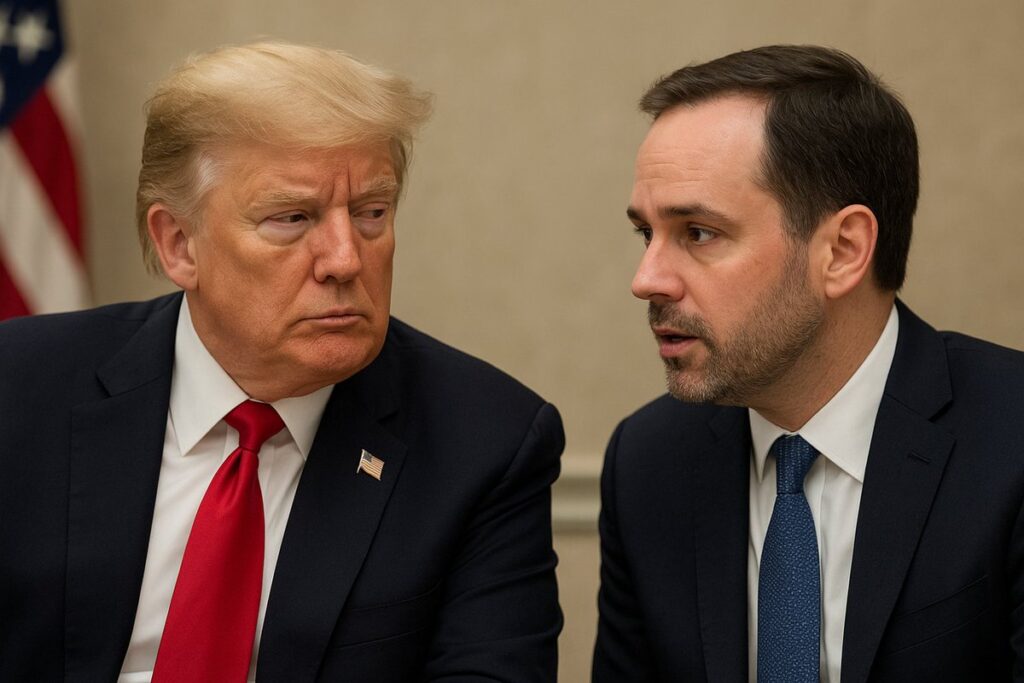Key Players & Context
- Patrick Witt is now Trump’s executive director of the President’s Council of Advisers on Digital Assets. He succeeded Bo Hines.
- His mandate includes pushing forward crypto legislation, overseeing implementation of existing laws, and helping shape a U.S. approach to holding Bitcoin/reserves of digital assets.
- Trump has already signed the GENIUS Act into law (in July 2025), which regulates stablecoins.
1. The Stablecoin Law: GENIUS Act
“GENIUS” stands for Guiding and Establishing National Innovation for U.S. Stablecoins. It’s now law.
What the law requires:
- Reserve backing: Stablecoin issuers must back stablecoins 100% with liquid assets such as U.S. dollars or short-term Treasury bills.
- Transparency: Monthly public disclosures of the composition of those reserves.
- Consumer protection: Priority for stablecoin holders in case of issuer insolvency and restrictions on misleading marketing.
- AML/sanctions compliance: Issuers must comply with anti-money laundering and sanctions laws.
Implications:
- Legitimacy & risk reduction: Addresses long-standing concerns about whether reserves are real and redeemable.
- Market growth: With clear rules, more banks, institutions, and mainstream firms may adopt stablecoins.
- Treasury demand: Since reserves must include U.S. Treasuries, this could boost demand for government debt.
- Criticism: Some argue there are gaps around AML enforcement, technology risks, and foreign issuer participation.
2. Market Structure Bill (“Clarity Act”)
The House has passed a bill defining how digital assets are treated (commodities vs. securities). The Senate is now working on its version. Witt calls this the top priority.
Key elements:
- Defining asset classes: Clarifies which tokens are securities (SEC) and which are commodities (CFTC).
- Bipartisan negotiation: Senate Banking and Agriculture Committees are shaping the bill.
- House/Senate alignment: Both chambers must reconcile versions to avoid legislative delays.
Challenges:
- 60 votes in Senate: Bipartisan support is essential.
- Agency turf wars: SEC and CFTC may resist losing jurisdiction.
- Speed vs. quality: The administration wants rapid passage, but rushed laws could create loopholes.
3. U.S. Bitcoin Reserve / Digital Asset Stockpile
The administration is exploring a Bitcoin Strategic Reserve — holding digital assets as part of U.S. government assets.
Proposals:
- Start with Bitcoin seized in government operations.
- Explore legal ways to accumulate more BTC under existing or new laws.
Issues:
- Legal authority: No clear precedent for government treating crypto as sovereign reserves.
- Acquisition methods: Beyond seizures, unclear whether the U.S. will buy, auction, or otherwise acquire BTC.
- Volatility & risk: Bitcoin remains volatile, raising concerns for federal budgets and reserves.
- Oversight: Rules are needed for custody, valuation, audits, and reporting.
4. Strategic & Market Implications
- Signal to industry: The U.S. wants to lead in crypto adoption and regulation.
- Institutional confidence: Clear rules reduce risk for banks and funds.
- Geopolitical angle: Stablecoin rules and a Bitcoin reserve could strengthen the dollar and U.S. position globally.
- Risks: Poor oversight or volatility could backfire, and watchdog groups may resist.
5. What to Watch Next
| Item | What to Monitor | Why It Matters |
|---|---|---|
| Senate Market Structure Bill | Speed, compromises, definitions of securities vs commodities | Determines regulatory clarity |
| GENIUS Act implementation | Reserve rules, audits, penalties | Impacts stablecoin safety and adoption |
| Bitcoin Reserve framework | How it’s authorized, managed, and accumulated | Affects feasibility and credibility |
| Agency coordination | SEC, CFTC, Fed, Treasury | Prevents overlapping or conflicting rules |
| Court challenges | From industry, privacy, or watchdog groups | Could reshape or delay policies |

6. Risks & Criticism
- Possible conflicts of interest, given Trump’s personal ties to crypto.
- Bitcoin’s volatility could destabilize a reserve fund.
- Overregulation could stifle innovation; underregulation could enable fraud.
- International rivals may move faster with more flexible frameworks.
Conclusion
Trump’s crypto strategy is ambitious: regulate stablecoins, clarify digital asset markets, and even stockpile Bitcoin. If implemented carefully, it could cement the U.S. as a global leader in digital assets. But execution, oversight, and risk management will decide whether this strategy strengthens financial stability or introduces new vulnerabilities.











